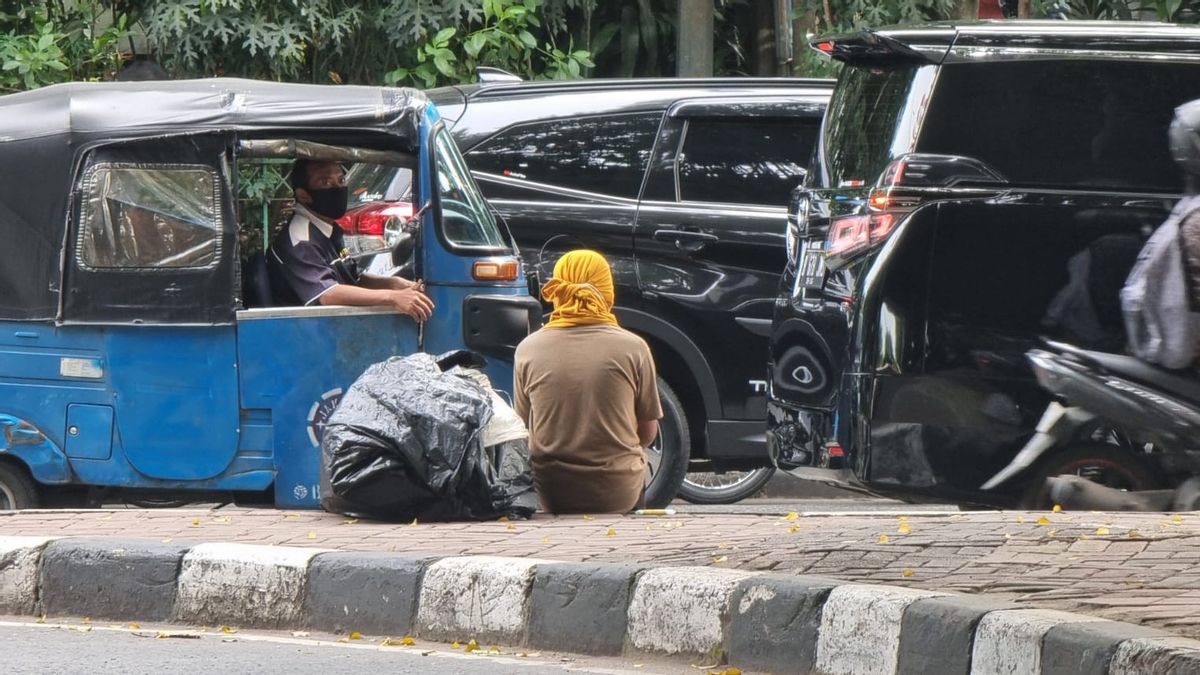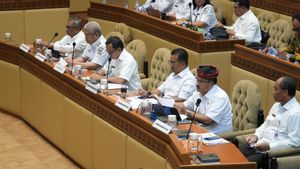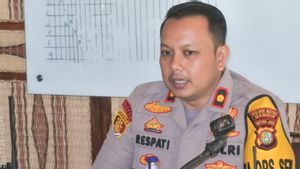JAKARTA - The poverty rate in Jakarta released by the Central Statistics Agency (BPS) of DKI Jakarta Province has begun to appear criticism. One of the studies that made public excitement was that the poorest area in Jakarta was in the Apung Village area, West Jakarta and the fishermen's area in Cilincing, North Jakarta.
Chairman of the Indonesian City Citizens Forum (FAKTA), Azas Tigor Nainggolan, said that BPS Jakarta should have tested the data by going to the field before it was published. Re-testing the field data so that the data is accurate.
"The data obtained in the field has not been tested yet, but it has been immediately published is the weakness and error of BPS Jakarta. As the head of BPS in Jakarta, he should know very well the need to re-examine the data that has been obtained, so that the data is accurate. So accurate data is published so as not to cause chaos and chaos in the public," said Azas Tigor to VOI, Tuesday, February 14.
According to Azas Tigor, the release issued by BPS Jakarta should be questioned. He was surprised how BPS Jakarta got the data and learned that a village in North Jakarta was still hit by extreme poverty.
"Personally, I specifically question how to get the data in the village? In my experience that research in the village, usually those who run are residents who are organized by the Kelurahan. Now if you are told to do a survey or collect data, I get information that the cadres only copy family data from the RTs. The cadres did not come to the house and meet directly with the residents of the research targets," he explained.
Azas added that the data held by the RTs was old data and the cadres of these residents often did not know about the current changes in the lives of residents in the village. For example, residents who have experienced economic development will, but in the records of the head of the local RT continue to be recorded as poor because the data has never been updated regularly.
"Often people prefer to be recorded or registered as poor people to receive social assistance (Bansos). As a result, people who are really poor often do not receive assistance from the Jakarta Regional Government because they are not registered as poor people in the RT data," he said.
Azas Tigor continued, there were no records of residents who turned into poor people because the data on residents in the RT chairman was allegedly rarely updated.
"If data collectors only record from the data from the head of the RT, of course the results of the research are inaccurate because they are taken from unrenewable records," he said.
Therefore, continued Azas, residents are often labeled as living in poor conditions and experiencing difficulties living just because the data is invalid. In fact, the impact of this invalid data has an impact on other problems such as the distribution of social assistance that is not on target.
Azas explained that many studies were carried out in villages in Jakarta, the data was not accurate because the mechanism or way of collecting the data was questionable. Research will be more accurate if it involves residents because it is considered to know better, master and know the condition of residents in the village concerned. And field supervision must be carried out by the organizers such as BPS Jakarta.
"This means that research conducted by BPS Jakarta in terms of research mechanisms in the field is still questionable. The facts on the ground are different from the data produced by BPS Jakarta research," he said.
As is known, based on data from the Central Statistics Agency (BPS) of DKI Jakarta Province, areas with the most extreme poverty rates are in North Jakarta.
"Based on our macro data, extreme poverty is the most in North Jakarta," said Head of the General Section of BPS DKI Jakarta Suryana to reporters, Monday, January 30.
This extreme poverty portrait was recorded by BPS DKI in the period March 2022. It was recorded that more than 35 thousand or 1.94 percent of North Jakarta residents were in the category of extreme poor.
Meanwhile, there are 11 thousand extreme poor people in West Jakarta (0.42 percent), Central Jakarta 4 thousand people (0.5 percent), East Jakarta 18 thousand people (0.61 percent), South Jakarta 25 thousand people (1.12 percent), and the Thousand Islands 390 people (1.49 percent).
Broadly speaking, the extreme poverty rate in Jakarta in March 2022 was 0.89 percent. This figure increased by 0.29 percent from 2021 by 0.6 percent.
Along with that, the government has a target of eliminating extreme poverty to 0 percent by 2024.
Meanwhile, Head of the Central Statistics Agency (BPS) Margo Yuwono emphasized the importance of improving systematics in the aspect of poverty management, including data management. According to Margo, such improvement efforts are needed to achieve the target of reducing poverty levels by 2024 to 7 percent and extreme poverty by zero percent.
The English, Chinese, Japanese, Arabic, and French versions are automatically generated by the AI. So there may still be inaccuracies in translating, please always see Indonesian as our main language. (system supported by DigitalSiber.id)













